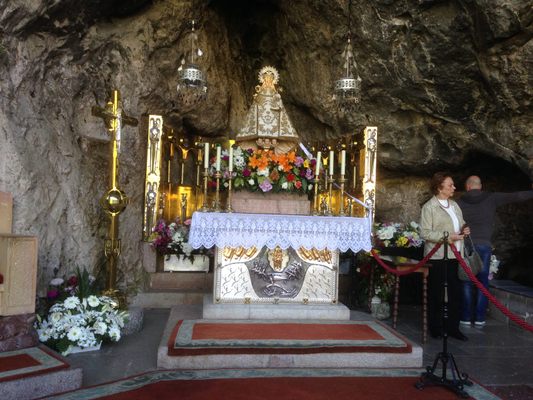About
The shrine within the Holy Cave of Covadonga is dedicated to the Virgin of Covadonga. But though the cave is now linked to Christianity, it’s believed it was first a site for prehistoric pagan worship.
Covadonga is an important site in Christian history. It was where Christian forces in Iberia defeated a Muslim army at the Battle of Covadonga, marking the beginning of the Spanish Reconquista.
According to Christian tradition, the cave was where Pelagius of Asturias, a Visigoth nobleman and founder of the Kingdom of Asturias, found a statue of the Virgin Mary that a hermit had erected. The statue then later miraculously helped his forces defeat their enemies. According to another version of history, Pelagius and a group of Christian refugees sought refuge in the cave, where they found safety and fed on honey from the bees that lived there. The Christian troops then returned after their victory at the Battle of Covadonga to place the statue there.
Pelagius is said to be buried within the cave, along with other Asturian royalty. Alfonso I of Asturias later had a chapel built within the cave to commemorate Pelagius’ victory.
Just down the street from the cave is the Basilica de Santa Maria la Real de Covadonga, built between 1877 and 1901. There, you’ll find an enormous statue of Pelagius out front. Both the cave and basilica sit in the gorgeous mountain range of the Picos de Europa.
Related Tags
Know Before You Go
Keep in mind that this is still a place for religious pilgrimages and act respectfully. See the sanctuary's website for its schedule to ensure your visit won't interrupt mass or other times for prayer.
Published
October 10, 2018































